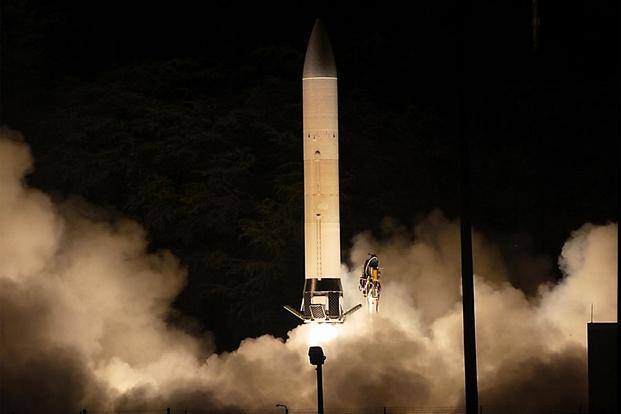The Army general in charge of long-range hypersonic weapons said Tuesday that the service hopes to select a commercial firm to build prototypes of the advanced strategic weapon by late summer.
"We have not awarded [a contract] yet; we are in the process of negotiating it," Lt. Gen. Neil Thurgood, director of Hypersonics, Directed Energy, Space and Rapid Acquisition, told a group of defense reporters at the Pentagon, adding that the deal should be complete by August.
Thurgood leads the Army's Rapid Capabilities and Critical Technologies Office, which the Army's senior leadership has tasked with delivering one battery of Long-Range Hypersonic Weapons capable of maneuvering at speeds of more than Mach 5 by fiscal 2023.
The hypersonic battery will be fielded to a strategic fires battalion inside one of the Army's new Multi-Domain Task Forces, Thurgood said.
"It's four vehicles, two missiles on a truck," he said. "We have to design and build a transported erector-launcher ... which puts it at a vertical or near-vertical position to make the launch happen.
"Some people may think of it as long-range artillery. It's not long-range artillery. It's a strategic weapon that will be used for strategic outcomes," he added.
As part of a larger Defense Department effort, the Army is teaming with the Navy, which will build the booster piece for the hypersonic weapon, Thurgood said.
The Army has the responsibility to produce the Common Hypersonic Glide Body for all the services, he said, adding that the Army also has the responsibility to build the industrial base in the U.S. to produce the common glide body capability.
"I can't tell you the number we are going to build," Thurgood said, explaining that his job is to get the capability into a small unit for now.
"When I say 'experimental prototype with residual combat capability,' it's we build the battery of hypersonics ... then that unit will have a combat capability so those eight rounds will be for them to use in combat if the nation decides it wants to apply that in a combat scenario," he said. "It really serves a couple of purposes. A lot of times, we need some early capability ... second is we need to learn how to use this piece of equipment."
The battery will train with the systems to learn tactics, techniques and procedures and figure out what works well and what doesn't, he said.
"So building a small set, a prototype set that has capability, allows us to do those things without committing to a large program of record that perhaps later doesn't really do what we want it to do, or maybe it's that we build a smaller prototype set with residual combat capability and, when I transition to a program of record, I need to fix these six things before we build a big number of them," Thurgood said.
-- Matthew Cox can be reached at matthew.cox@military.com.













